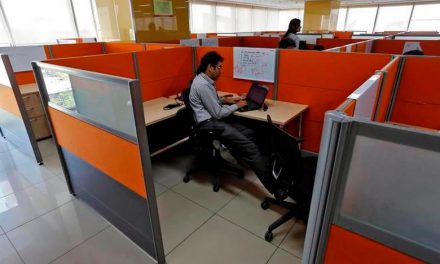● One in four respondents (25 per cent), mostly from retail and consumer industries, have decided to freeze or park hiring during this period.
● Sixty-five per cent of respondents have allowed their employees to work from home.
● Only eight per cent of companies surveyed feel that they are equipped with the necessary technology infrastructure and equipment to support remote work.
HONG KONG SAR | In a recent survey conducted by Randstad Hong Kong, 63 per cent of respondents said that they are still proceeding with their plans to hire talent for replacement and critical roles. One in four companies (25 per cent) surveyed have chosen to either freeze hiring or parked those headcounts until a later date.
The Randstad Hong Kong’s Employer Pulse Survey aims to understand business sentiments and workforce management in light of the COVID-19 outbreak. The survey results revealed that a majority of employers are still hiring talent, despite the anticipated business impact from COVID-19.
Ms. Natellie Sun, Managing Director, Search and Selection, for Greater China at Randstad said, “Many employers would have planned their hiring activities for the first quarter as they know that’s when job seekers are open to new opportunities after bonus season. Given this trend, it’s business-as-usual for many organisations that still have vacant roles to fill and targets to hit. Hiring activities are also more rampant in high-growth spaces like technology, life sciences and functions within banking. However, we’ve observed a dip in hiring activities within retail, consumer, hospitality and tourism. Some of these companies may have also asked their customer-facing employees to take no-pay leave as a result of reduced foot traffic.”
Thirteen (13) per cent of the companies surveyed said that they will maintain headcount, but may apply other measures such as salary adjustments and bonus suspension to mitigate anticipated losses.
split sentiments on the impact of COVID-19 on possible business restructuring
Forty-two per cent of respondents expressed that they are “not too concerned” that COVID-19 will result in a company restructuring. The other 58 per cent of respondents are concerned that their employment may be vulnerable to possible business restructuring. Out of which, seven per cent said that they are “extremely concerned”.
Respondents from the retail and consumer industries are the most likely to feel the brunt of the outbreak. 72% of them expressed concern about how the outbreak will impact their employment status.
91% made business arrangements to protect their employees
More than two in three respondents (65 per cent) allowed their employees to work from home to prevent any potential community transmissions. A further 22 per cent of employers introduced shift or split team arrangements for employees to come to the office on different days of the week. Another four per cent had allowed their employees to leave work earlier to avoid peak hours.
Ms Sun adds, “The SARS outbreak in 2003 had taught us many valuable lessons. During this period, many people have consciously minimised physical interactions and avoided crowded areas to prevent the possibility of a community outbreak. Many companies have also prepared business continuity plans for circumstances like these, where they have to make temporary business arrangements for their staff to work from home.”
However, 24 per cent of respondents said that this arrangement is only a temporary measure and they will not implement a work-from-home policy as an employee benefit after COVID-19. Forty-four (44) per cent of respondents said that they already offer remote working as an employee benefit to either all of their staff or select employees and functions.
The ability for organisations and employees to maintain workplace productivity is still up for debate. Fourteen (14) per cent of respondents observed a sustained level of productivity, while another 14 per cent of employers noticed reduced productivity, resulting in a closer review of their corporate policy.
only 8% are fully-equipped with the necessary infrastructure to support remote work
More than half of the companies surveyed (51 per cent) said that they will review and upgrade their digital infrastructure to ensure more effective productivity, collaboration and communication after COVID-19. One in three (34 per cent) said that they will issue laptops to their employees to enable remote working and 20 per cent will invest in strengthening their cybersecurity network to protect their company’s data.
Ms Sun said, “COVID-19 could have accelerated the plans that employers already had about remote working and upgrades to their technology infrastructure. When employees work from home, they face challenges that they would not if they were to work in the office. Some may have problems accessing files from the cloud network, while others may not be able to connect to the teleconferencing system as smoothly as they’d hoped. Job seekers and employees have also increasingly perceived benefits such as remote working and flexible working arrangements as hygiene factors. This is why employers should collect feedback from their staff and improve their digital systems to make sure they are fully-equipped to provide a seamless working experience, whether at home or remotely.”
45% will maintain headcount but apply measures to mitigate losses after COVID-19
“Even though employers are hiring talent for new or critical roles now, companies in Hong Kong will likely take some time to adjust for real losses and recalibrate their workforce needs after COVID-19. We expect that most companies will wait until the economy starts to stabilise before they continue with their original hiring plans,” Ms Sun adds.
The survey revealed that 30 per cent will continue to park headcount growth until the economy and business growth picks up. Only 24 per cent of respondents said that they will begin to hire for permanent roles and contract workers to remain agile.
The COVID-19 Employer Pulse Survey was conducted between 24 February 2020 and 2 March 2020 with 372 respondents (employers and HR professionals).





















